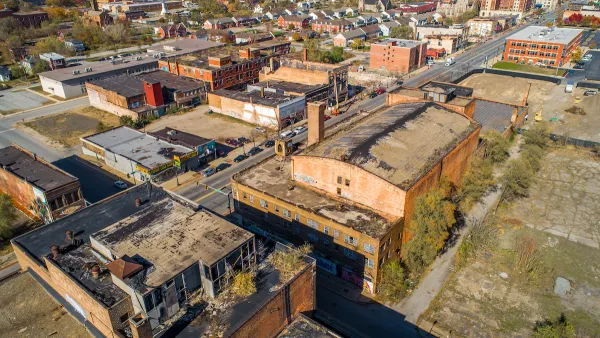While Washington D.C. and its surrounding counties is in the midst of a population, development, and infrastructure investment boom, the region farther south and west in the state of Virginia is bleeding population.
"Six Southwest Virginia counties and the city of Bristol, Virginia, saw populations decrease a combined 2,800 residents since the 2010 U.S. Census, while four counties and the city of Norton recorded modest gains totaling less than 500," reports David McGee. The demographic figures come from a report the University of Virginia’s Weldon Cooper Center for Public Service. "Wise County recorded the state’s greatest decline, shrinking by more than 1,200 people. Its population fell 3 percent from 41,452 to 40,197, according to the report."
McGee credits the falling population in Southwest Virginia to the loss of coal mining jobs in the area and notes that most of the state's modest growth occurred in the state's most densely populated areas.
In a separate article, Carmen Forman reports on the demographic trends a little farther north and east, in Roanoke, Virginia. There members of the Roanoke County Board of Supervisors recently expressed concern with a report finding "that almost half of the people in the Roanoke region are 55 or older and are ready for or are nearing retirement age."
"Behind Asheville, North Carolina, Roanoke ranked second highest in a group of its peers for having the most residents at least 55 years old," according to information credited to John Hull, the market intelligence director for the Roanoke Regional Partnership. For the record, Roanoke's peers, according to the study, include localities such as Lynchburg, Virginia; Asheville and Winston-Salem, North Carolina; Chattanooga, Tennessee; Fort Wayne, Indiana; and Spartanburg, South Carolina."
FULL STORY: Study finds population decrease since 2010 in Southwest Virginia

National Parks Layoffs Will Cause Communities to Lose Billions
Thousands of essential park workers were laid off this week, just before the busy spring break season.

Retro-silient?: America’s First “Eco-burb,” The Woodlands Turns 50
A master-planned community north of Houston offers lessons on green infrastructure and resilient design, but falls short of its founder’s lofty affordability and walkability goals.

Delivering for America Plan Will Downgrade Mail Service in at Least 49.5 Percent of Zip Codes
Republican and Democrat lawmakers criticize the plan for its disproportionate negative impact on rural communities.

Test News Post 1
This is a summary

Test News Headline 46
Test for the image on the front page.

Balancing Bombs and Butterflies: How the National Guard Protects a Rare Species
The National Guard at Fort Indiantown Gap uses GIS technology and land management strategies to balance military training with conservation efforts, ensuring the survival of the rare eastern regal fritillary butterfly.
Urban Design for Planners 1: Software Tools
This six-course series explores essential urban design concepts using open source software and equips planners with the tools they need to participate fully in the urban design process.
Planning for Universal Design
Learn the tools for implementing Universal Design in planning regulations.
EMC Planning Group, Inc.
Planetizen
Planetizen
Mpact (formerly Rail~Volution)
Great Falls Development Authority, Inc.
HUDs Office of Policy Development and Research
NYU Wagner Graduate School of Public Service





























